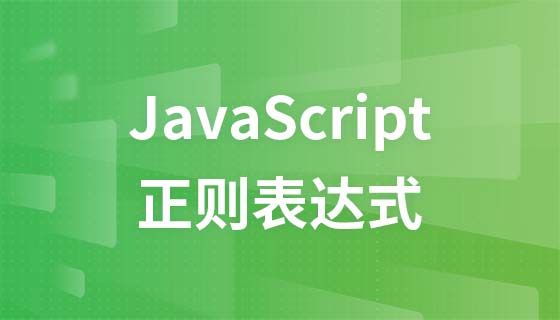golang 实现一个restful微服务的操作
来源:脚本之家
时间:2023-01-07 11:58:35 220浏览 收藏
怎么入门Golang编程?需要学习哪些知识点?这是新手们刚接触编程时常见的问题;下面golang学习网就来给大家整理分享一些知识点,希望能够给初学者一些帮助。本篇文章就来介绍《golang 实现一个restful微服务的操作》,涉及到微服务、RESTful,有需要的可以收藏一下
如何用net/http构建一个简单的web服务
Golang提供了简洁的方法来构建web服务
package main
import (
"net/http"
)
func HelloResponse(rw http.ResponseWriter, request *http.Request) {
fmt.Fprintf(w, "Hello world.")
}
func main() {
http.HandleFunc("/", HelloResponse)
http.ListenAndServe(":3000", nil)
}
其中核心的两个方法:
func HandleFunc(pattern string, handler func(ResponseWriter, *Request)):HandleFunc注册一个handler function对应到给定的pattern。
func ListenAndServe(addr string, handler Handler) error:ListenAndServe监听给定的TCP网络地址,接着带上handler调用Serve方法来接收请求。
在go build之后,执行编译后的文件就能在客户端看到hello world了
有了web服务,就可以制定小目标了
我认为作为第一版本,不需要复杂的设计,只需要接收到用户的请求,并且找到对应的handler,执行其逻辑,然后返回JSON响应就好了。
小目标有了,那怎么实现呢?
1.设计用户如何注册Controller和Action
据我观察,一些框架是在Controller里预先设定了GET,POST,PUT等一系列方法,负责接收GET,POST,PUT的HTTP请求。
我认为这样设计的确有其优势,因为用户只需要实现这些方法就好了,但在业务层面也有其劣势,因为我们没有办法保证负责一个页面或者功能的Controller只接收一个GET请求,如果有2个GET请求,那就需要再建立一个Controller,单单实现其GET方法。
因此我借鉴了PHP社区中Laravel注册Controller和Action的语法:Get("/", "IndexController@Index")。
用户只需要定义:
type IndexController struct {
}
func (IndexController *IndexController) Index(//params) (//return values) {
}
当然这样思考后,就给框架带入了一点动态脚本语言的特性,肯定会用到Golang的reflect库。
2.设计Path和Controller还有Action的关系容器
我运用了Golang的map,定义了map[string]map[string]map[string]string这样的数据结构
以["/":["GET":["IndexController":"Get"], "POST":["IndexController":"Post"]], "/foo":["GET":["IndexController":"Foo"]]]举例:
这个说明了在"/"这个PATH下面,有GET和POST请求,分别对应了IndexController下的Get和Post方法,在"/foo"这个PATH下面,有GET请求,对应IndexController下的Foo方法。
在接受请求时候,如果没有找到对应的方法,就返回405。
3.如何将注册了的一系列Method与PATH绑定来接收外部请求
我们可以看到,func HandleFunc(pattern string, handler func(ResponseWriter, *Request))要求的handler类型是func(ResponseWriter, *Request)),这和我们设计的functionfunc (IndexController *IndexController) Index(//params) (//return values) {}有所差距。
这时候我发现由于Golang具备First Class Functions特性,因此我们可以将函数做如下处理:
http.HandleFunc(path, HandleRequest())
func HandleRequest() {
return func(rw http.ResponseWriter, request *http.Request) {
// do your logic
}
}
4.和encoding/json说Hi
当我们接收到function的返回值后,我们就需要对结果进行json encode,而encoding/json正是负责这个功能。 我用的是json.Marshal():
func Marshal(v interface{}) ([]byte, error): Marshal返回v的encoding结果。
如何使用
package main
import (
"net/url"
"net/http"
"github.com/ZhenhangTung/GoGym"
)
type IndexController struct {
}
func (IndexController *IndexController) Index(request map[string]url.Values, headers http.Header) (statusCode int, response interface{}) {
return 200, map[string]string{"hello": "world"}
}
type BarController struct {
}
func (*BarController) Bar(request map[string]url.Values, headers http.Header) (statusCode int, response interface{}, responseHeader http.Header) {
return 200, map[string]string{"GoTo": "Bar"}, http.Header{"Foo": {"Bar", "Baz"}}
}
func main() {
var apiService = GoGym.Prepare()
apiService.Get("index", "IndexController@Index")
apiService.Post("bar", "BarController@Bar")
controllers := []interface{}{&IndexController{}}
apiService.RegisterControllers(controllers)
apiService.RegisterController(&BarController{})
apiService.Serve(3000)
}
项目完整代码
package GoGym
import (
"encoding/json"
"fmt"
"net/http"
"net/url"
"reflect"
"strings"
)
const (
GETMethod = "GET"
POSTMethod = "POST"
PUTMethod = "PUT"
PATCHMethod = "PATCH"
DELETEMethod = "DELETE"
OPTIONSMethod = "OPTIONS"
)
const (
HTTPMethodNotAllowed = 405
)
// APIService for now is the struct for containing controllerRegistry and registeredPathAndController,
// and it is the core service provider
type APIService struct {
// controllerRegistry is where all registered controllers exist
controllerRegistry map[string]interface{}
//registeredPathAndController is a mapping of paths and controllers
registeredPathAndController map[string]map[string]map[string]string
requestForm map[string]url.Values
}
func (api *APIService) Get(path, controllerWithActionString string) {
mapping := api.mappingRequestMethodWithControllerAndActions(GETMethod, path, controllerWithActionString)
api.registeredPathAndController[path] = mapping
}
func (api *APIService) Post(path, controllerWithActionString string) {
mapping := api.mappingRequestMethodWithControllerAndActions(POSTMethod, path, controllerWithActionString)
api.registeredPathAndController[path] = mapping
}
func (api *APIService) Put(path, controllerWithActionString string) {
mapping := api.mappingRequestMethodWithControllerAndActions(PUTMethod, path, controllerWithActionString)
api.registeredPathAndController[path] = mapping
}
func (api *APIService) Patch(path, controllerWithActionString string) {
mapping := api.mappingRequestMethodWithControllerAndActions(PATCHMethod, path, controllerWithActionString)
api.registeredPathAndController[path] = mapping
}
func (api *APIService) Options(path, controllerWithActionString string) {
mapping := api.mappingRequestMethodWithControllerAndActions(OPTIONSMethod, path, controllerWithActionString)
api.registeredPathAndController[path] = mapping
}
func (api *APIService) Delete(path, controllerWithActionString string) {
mapping := api.mappingRequestMethodWithControllerAndActions(DELETEMethod, path, controllerWithActionString)
api.registeredPathAndController[path] = mapping
}
// mappingRequestMethodWithControllerAndActions is a function for mapping request method with controllers
// which containing actions
func (api *APIService) mappingRequestMethodWithControllerAndActions(requestMethod, path, controllerWithActionString string) map[string]map[string]string {
mappingResult := make(map[string]map[string]string)
if length := len(api.registeredPathAndController[path]); length > 0 {
mappingResult = api.registeredPathAndController[path]
}
controllerAndActionSlice := strings.Split(controllerWithActionString, "@")
controller := controllerAndActionSlice[0]
action := controllerAndActionSlice[1]
controllerAndActionMap := map[string]string{controller: action}
mappingResult[requestMethod] = controllerAndActionMap
return mappingResult
}
// HandleRequest is a function to handle http request
func (api *APIService) HandleRequest(controllers map[string]map[string]string) http.HandlerFunc {
return func(rw http.ResponseWriter, request *http.Request) {
request.ParseForm()
method := request.Method
api.requestForm["query"] = request.Form
api.requestForm["form"] = request.PostForm
macthedControllers, ok := controllers[method]
if !ok {
rw.WriteHeader(HTTPMethodNotAllowed)
}
for k, v := range macthedControllers {
controllerKey := "*" + k
controller := api.controllerRegistry[controllerKey]
in := make([]reflect.Value, 2)
in[0] = reflect.ValueOf(api.requestForm)
in[1] = reflect.ValueOf(request.Header)
returnValues := reflect.ValueOf(controller).MethodByName(v).Call(in)
statusCode := returnValues[0].Interface()
intStatusCode := statusCode.(int)
response := returnValues[1].Interface()
responseHeaders := http.Header{}
if len(returnValues) == 3 {
responseHeaders = returnValues[2].Interface().(http.Header)
}
api.JSONResponse(rw, intStatusCode, response, responseHeaders)
}
}
}
// RegisterHandleFunc is a function registers a handle function to handle request from path
func (api *APIService) RegisterHandleFunc() {
for k, v := range api.registeredPathAndController {
path := k
if !strings.HasPrefix(k, "/") {
path = fmt.Sprintf("/%v", k)
}
http.HandleFunc(path, api.HandleRequest(v))
}
}
// RegisterControllers is a function registers a struct of controllers into controllerRegistry
func (api *APIService) RegisterControllers(controllers []interface{}) {
for _, v := range controllers {
api.RegisterController(v)
}
}
// RegisterControllers is a function registers a controller into controllerRegistry
func (api *APIService) RegisterController(controller interface{}) {
controllerType := getType(controller)
api.controllerRegistry[controllerType] = controller
}
// getType is a function gets the type of value
func getType(value interface{}) string {
if t := reflect.TypeOf(value); t.Kind() == reflect.Ptr {
return "*" + t.Elem().Name()
} else {
return t.Name()
}
}
// Serve is a function
func (api *APIService) Serve(port int) {
api.RegisterHandleFunc()
fullPort := fmt.Sprintf(":%d", port)
http.ListenAndServe(fullPort, nil)
}
// JSONResponse is a function return json response
func (api *APIService) JSONResponse(rw http.ResponseWriter, statusCode int, response interface{}, headers http.Header) {
for k, v := range headers {
for _, header := range v {
rw.Header().Add(k, header)
}
}
rw.Header().Add("Content-Type", "application/json")
rw.WriteHeader(statusCode)
rsp, err := json.Marshal(response)
if err != nil {
// TODO: logging error
fmt.Println("JSON err:", err)
}
rw.Write(rsp)
}
// Prepare is a fucntion prepare the service and return prepared service to the user
func Prepare() *APIService {
var apiService = new(APIService)
apiService.controllerRegistry = make(map[string]interface{})
apiService.registeredPathAndController = make(map[string]map[string]map[string]string)
apiService.requestForm = make(map[string]url.Values)
return apiService
}
以上为个人经验,希望能给大家一个参考,也希望大家多多支持golang学习网。如有错误或未考虑完全的地方,望不吝赐教。
今天关于《golang 实现一个restful微服务的操作》的内容就介绍到这里了,是不是学起来一目了然!想要了解更多关于golang的内容请关注golang学习网公众号!
-
354 收藏
-
194 收藏
-
314 收藏
-
462 收藏
-
207 收藏
-
379 收藏
-
119 收藏
-
140 收藏
-
147 收藏
-
378 收藏
-
255 收藏
-
287 收藏
-
393 收藏
-
310 收藏
-
110 收藏
-
412 收藏
-
423 收藏
-

- 前端进阶之JavaScript设计模式
- 设计模式是开发人员在软件开发过程中面临一般问题时的解决方案,代表了最佳的实践。本课程的主打内容包括JS常见设计模式以及具体应用场景,打造一站式知识长龙服务,适合有JS基础的同学学习。
- 立即学习 543次学习
-

- GO语言核心编程课程
- 本课程采用真实案例,全面具体可落地,从理论到实践,一步一步将GO核心编程技术、编程思想、底层实现融会贯通,使学习者贴近时代脉搏,做IT互联网时代的弄潮儿。
- 立即学习 516次学习
-

- 简单聊聊mysql8与网络通信
- 如有问题加微信:Le-studyg;在课程中,我们将首先介绍MySQL8的新特性,包括性能优化、安全增强、新数据类型等,帮助学生快速熟悉MySQL8的最新功能。接着,我们将深入解析MySQL的网络通信机制,包括协议、连接管理、数据传输等,让
- 立即学习 500次学习
-

- JavaScript正则表达式基础与实战
- 在任何一门编程语言中,正则表达式,都是一项重要的知识,它提供了高效的字符串匹配与捕获机制,可以极大的简化程序设计。
- 立即学习 487次学习
-

- 从零制作响应式网站—Grid布局
- 本系列教程将展示从零制作一个假想的网络科技公司官网,分为导航,轮播,关于我们,成功案例,服务流程,团队介绍,数据部分,公司动态,底部信息等内容区块。网站整体采用CSSGrid布局,支持响应式,有流畅过渡和展现动画。
- 立即学习 485次学习
